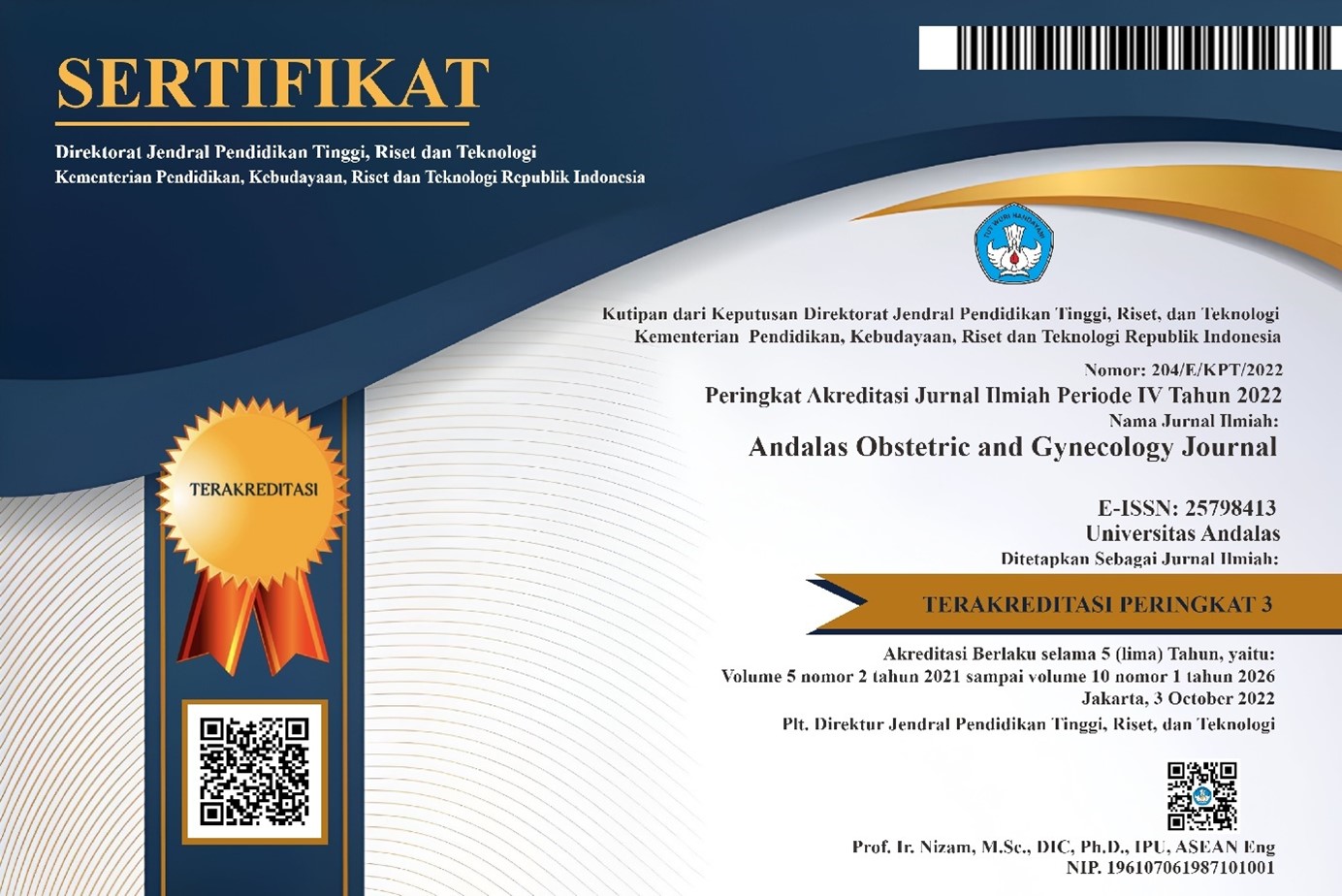Peripartum Cardiomyopathy: A Case Management Series At Sanjiwani Hospital
DOI:
https://doi.org/10.25077/aoj.7.1.320-329.2023Keywords:
Early Detection, Echocardiography, Peripartum CardiomyopathyAbstract
Introduction: In Peripartum Cardiomyopathy (PPCM), heart function will generally return to normal a few
months after delivery, but in some cases poor outcomes might occur, therefore early detection and management
are crucial. This case series study aims to get an overview of PPCM cases in a type-B referral hospital in Gianyar,
Bali.
Case Presentation: This study presents 3 cases of PPCM that showed symptom onset in the antepartum period
(the third trimester of pregnancy). Two out of three cases were nulliparous with maternal age <30 years, and
went through a Cesarean Section. All three cases underwent treatment in the Intensive Care Unit and showed
improvement in their condition.
Discussion: Until now, the heterogeneity of PPCM diagnostic criteria has become an obstacle to its treatment,
thus the reported incidence tends to be low. This is likely due to the diagnosis of PPCM which is an exclusion
diagnosis from other causes of heart failure. Echocardiography and NT-ProBNP examinations should be done,
which, although not specific, may lead to a diagnosis of PPCM when combined with a thorough patient history.
The availability of supporting examination modalities in many regions in Indonesia are varied thus referrals are
usually needed, resulting in the delay of PPCM cases management.
Conclusion: All pregnant women who experience dyspnea during the third trimester of pregnancy, along with a
family history of heart disease, need to undergo close examination and supervision due to the suspicion of PPCM.
Early detection and treatment are the main key to successful management of PPCM cases
References
Stergiopoulos K, Lima FV. Peripartum cardiomyopathy-diagnosis, management, and long
term implications. Trends in Cardiovascular Medicine. 2019;29(3):164–73.
Arany Z, Elkayam U. Peripartum cardiomyopathy. Circulation. 2016;133(14):1397–409.
Prameswari HS, Purnomowati A, Aprami TM. Prevalence, characteristics, andRisk factor
of patients with Peripartum Cardiomyopathy in Hasan Sadikin hospital bandung.
Indonesian Journal of Cardiology. 2016;:38–44.
Aoyama D, Hamatani Y, Kamiya C, Ohta-Ogo K, Amaki M, Kawakami S, et al. Peripartum
serial echocardiographic findings in a patient with life-threatening peripartum
cardiomyopathy. Internal Medicine. 2018;57(21):3105–9.
Azibani F, Sliwa K. Peripartum cardiomyopathy: An update. Current Heart Failure
Reports. 2018;15(5):297–306
Downloads
Published
Issue
Section
License
Copyright (c) 2023 Grace Eva, Anak Agung Gede Raka Budayasa, Anak Agung Gede Indrayana Putra, Ketut Erna Bagiari

This work is licensed under a Creative Commons Attribution 4.0 International License.
Copyright
Authors who publish with this journal agree to the following terms:
- Authors retain the copyright of published articles and grant the journal right of first publication with the work simultaneously licensed under a Creative Commons Attribution 4.0 International License that allows others to share the work with an acknowledgment of the work's authorship and initial publication in this journal.
- Authors are able to enter into separate, additional contractual arrangements for the non-exclusive distribution of the journal's published version of the work (e.g., post it to an institutional repository or publish it in a book), with an acknowledgment of its initial publication in this journal.
- Authors are permitted and encouraged to post their work online (e.g., in institutional repositories or on their website) prior to and during the submission process, as it can lead to productive exchanges, as well as earlier and greater citation of published work (See The Effect of Open Access).
License:
Andalas Obstetrics and Gynecology Journal (AOJ) is published under the terms of the Creative Commons Attribution 4.0 International License. This license permits anyone to copy and redistribute this material in any form or format, compose, modify, and make derivatives of this material for any purpose, including commercial purposes, as long as they credit the author for the original work.







